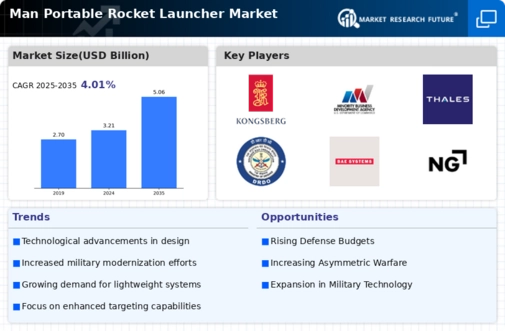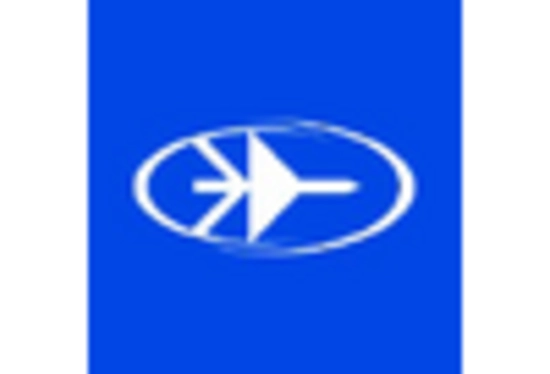Emerging Markets and Defense Budgets
Emerging markets are significantly influencing the Man Portable Rocket Launcher Market, as many nations are increasing their defense budgets to enhance military capabilities. Countries in Asia and the Middle East are particularly focused on modernizing their armed forces, which includes investing in portable rocket launchers. Recent data indicates that defense spending in these regions has risen by over 10% in the past year, reflecting a strategic shift towards strengthening national security. This trend is likely to continue, with projections suggesting that the market for man-portable systems could see a substantial uptick, driven by the need for effective and mobile weaponry in evolving geopolitical landscapes.
Technological Advancements in Weaponry
The Man Portable Rocket Launcher Market is experiencing a surge in technological advancements that enhance the effectiveness and efficiency of these systems. Innovations such as improved guidance systems, lightweight materials, and advanced propulsion technologies are being integrated into new models. For instance, the introduction of smart munitions and precision-guided systems has the potential to increase hit accuracy significantly. As military forces seek to modernize their arsenals, the demand for these advanced systems is likely to rise. Reports indicate that the market for advanced rocket launchers is projected to grow at a compound annual growth rate of approximately 5.2% over the next five years, reflecting the increasing reliance on sophisticated weaponry in modern combat scenarios.
Geopolitical Tensions and Military Preparedness
Geopolitical tensions across various regions are contributing to the growth of the Man Portable Rocket Launcher Market. As nations face increasing threats from both state and non-state actors, there is a pressing need for military preparedness. This has led to a renewed focus on equipping armed forces with versatile and effective weapon systems, including man-portable rocket launchers. The market is likely to benefit from this trend, as defense forces prioritize investments in systems that can be rapidly deployed in response to emerging threats. Analysts suggest that the market could expand by approximately 7% over the next few years, driven by the urgency to enhance military readiness.
Increased Demand for Asymmetric Warfare Solutions
The ongoing evolution of warfare has led to a heightened demand for asymmetric warfare solutions, which is a key driver in the Man Portable Rocket Launcher Market. As military engagements become more irregular and unconventional, forces are increasingly turning to portable rocket launchers that can be deployed quickly and effectively in diverse environments. This shift is particularly evident in regions where traditional military engagements are less feasible. The market is expected to witness a notable increase in demand, with estimates suggesting that the sector could expand by 6% annually as armed forces adapt to new operational challenges and seek versatile solutions to counter threats.
Increased Focus on Soldier Mobility and Versatility
The emphasis on soldier mobility and versatility is a critical driver in the Man Portable Rocket Launcher Market. Modern military strategies prioritize the ability of troops to maneuver swiftly and adapt to various combat scenarios. As a result, there is a growing demand for lightweight and easily transportable rocket launchers that can be operated by individual soldiers. This trend is reflected in recent procurement strategies, where armed forces are seeking systems that enhance operational flexibility. Market forecasts indicate that the demand for such portable systems could increase by 5.5% annually, as militaries recognize the importance of equipping personnel with adaptable and effective weaponry.


















Leave a Comment